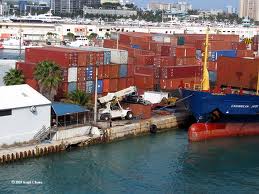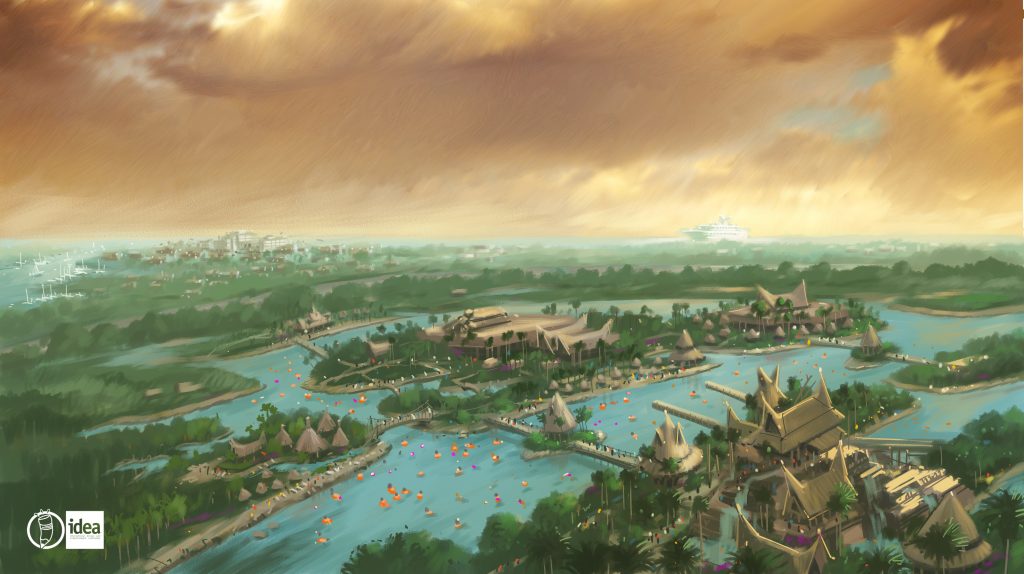The Caribbean’s open ports versus all inclusive secure zones
Of all of the ports and water fronts in the Caribbean, very few are open to the public. Falmouth in Jamaica, as an example, is designed as an open port. With this project we purposely moved and limited the primary security zone to the apron, which will in time shift the economics of the port infrastructure for the and benefit of the cruise lines, port authority, local community, and of course the visitors.

We can look to European ports to see what happens when you do it right and create an open pedestrian space around the ports. In these idea situations like Portofino, retailers and restaurateurs prosper, the visitors are excited by the sense of arrival and even more ships will want to use the port of activity and life. Everybody wins.
Cruise lines and port authorities in the Caribbean are losing out, not only on revenue opportunities but on visitor satisfaction.
The world’s most tourism-dependent region must invest in delivering a world-class experience from the first step on their shores.
Here is where the dilemma lies for closed secure ports:
Retailers within closed secure ports are only open while ships are in port. The rest of the time they are closed and have no opportunity to sell to other visitors and the local community. The port infrastructure is not producing revenue for the port authority or local economy when closed yet occupies the most valuable real estate in the community.
- Ports of call were designed to handle cargo. Cruise passengers are made to walk through industrial zones with no sense of arrival. In some cases the area looks unsafe or is so different from what they experience on board the ship that they are reluctant to leave the ship. Next time you are on a ship look down from the balcony of your stateroom, what do you see!
I’ve found the following issues contribute to the Caribbean’s lingering port problem:
- Port Authorities don’t have enough in house development and real business knowledge to understand the business model potential. Often, ports are run by mariners or those who have experience at running cargo ports, and not branded destinations.
- Cruise lines tend to encourage travelers to feel somewhat unsafe and that the countries themselves are not safe. Thus keeping locals out play to this insecurity. This insecurity is changing with social media as more people are hearing about experiences from their friends and sites not controlled by the lines.
- Cruise lines are naturally focused on repaying ship debt and protecting their own profits and revenue streams. However the economics of the port must sustain a welcoming guest arrival and provide for a safe clean and landscaped environment.
Cruise lines and Port Authorities need to view their ports of calls differently if this situation is going to improve:
- Port Authorities need to take a more senior role in the development of their properties. They need to take the view they are creating a branded destination and understand the kind of experience they want visitors to have. This is the “entertainment business” and they need to deliver on expectations that visitors have for their destination.
- Port Authorities need to separate financial models of cruise line business from cargo when determining priorities. Even though they may have a big interest in cargo they need to plan for both functions. Currently ports generate on average 70% of revenue from cargo – but revenue streams could be very different if commercial retail is added and the area is developed into a complete economic waterfront development.
- Cruise lines need to invest more time in understanding and developing the off-ship experience, and understand that it adds value to the whole of the cruise experience.
In Falmouth’s case we were pleased to able to help the Port Authority of Jamaica understand the commercial revenue streams and enables them to change the long term economics of the port. The potential for the future is significant and the Caribbean, being the world’s most tourism dependent region needs to take this seriously. Creating world-class ports should be a number one priority for infrastructure planning in the Caribbean.
I’d love to hear your opinion of this post. Please post your comments below.





